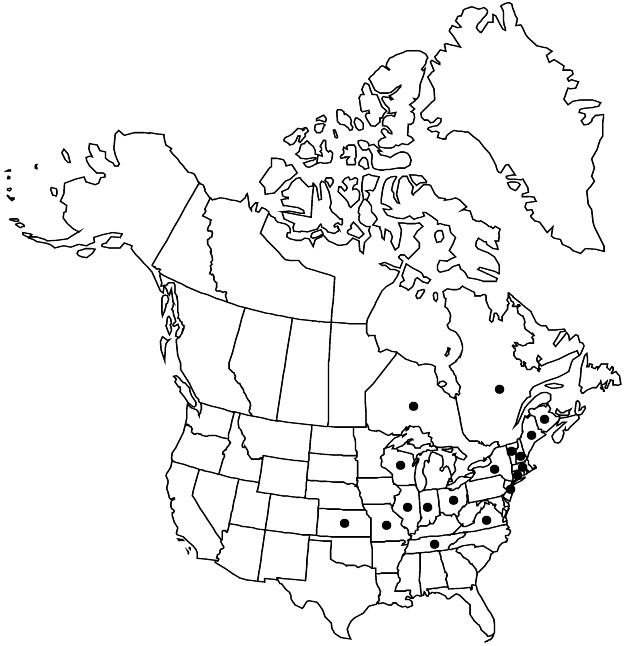Rosa spinosissima
Sp. Pl. 1: 491. 1753.
Prickles internodal, dense on main-stems, sparser on some flowering branches, paired or single, erect or ± curved, terete, 5–6 × 1–3 mm, mixed with shorter prickles and usually aciculi. Leaves: stipules 9–14 × 2–4 mm, auricles 2.5–5 mm, margins entire or serrate-glandular, surfaces glabrous; petiole and rachis with pricklets, pubescent, glandular; leaflets: blade oblong-ovate or suborbiculate, (5–) 7–9 (–11) × 5–8 mm, or broadly elliptic, 5–22 × 5–12 mm, base obtuse or rounded to broadly cuneate, margins 1-serrate, sometimes multi-serrate, teeth 8–12 per side, gland-tipped, apex obtuse to acute. Pedicels: bracts absent. Flowers: hypanthium 3–5 × 3–4 mm; sepal tip 2–3 mm, apex acuminate or caudate-acuminate; petals white, 15–25 × 14–23 mm; styles exsert 2 mm beyond stylar orifice of hypanthial disc. Achenes 8–12, dark tan, 4 × 2.5 mm. 2n = 28.
Phenology: Flowering May–Jun.
Habitat: Disturbed areas
Elevation: 0–500 m
Distribution

Introduced; N.B., Ont., Que., Conn., Ill., Ind., Kans., Maine, Mass., Mo., N.H., N.J., N.Y., Ohio, Tenn., Vt., Va., Wis., Europe, Asia (China), Asia (Japan), also in Atlantic Islands (Iceland), Pacific Islands (New Zealand)
Discussion
Rosa spinosissima hybridizes with other species of the genus. Some garden cultivars are more robust and glandular than wild types.
Rosa spinosissima is an erect, relatively low subshrub characterized by erect, relatively short stems with relatively long rhizomes forming dense patches. Stems extend to 10 dm with dense, intermixed internodal prickles and aciculi and lacking infrastipular prickles. Leaflets are relatively small and mostly 9–11; flowers are solitary and petals are white; inflorescences lack bracts; and hips are lustrous, blackish purple with erect, persistent sepals.
Using Rosa spinosissima as one parent, George Harison crossed R. ×foetida (Austrian brier rose) in his New York City garden in about 1830 to produce Harison's yellow rose, R. ×harisonii Rivers. This unique yellow flowering rose was planted widely as pioneers moved west across the plains where even today it has been found in Arizona, Colorado, Idaho, Iowa, Nebraska, Nevada, Texas, Utah, and other states.
Of a group of medicinal plants tested for antioxidant properties, Rosa spinosissima, with the largest amounts of phenolic compounds, proved to have the highest radical scavenging activity and provided the highest peroxidation inhibition (A. Mavi et al. 2004).
Selected References
None.
Lower Taxa
"dm" is not declared as a valid unit of measurement for this property."dm" is not declared as a valid unit of measurement for this property."dm" is not declared as a valid unit of measurement for this property.